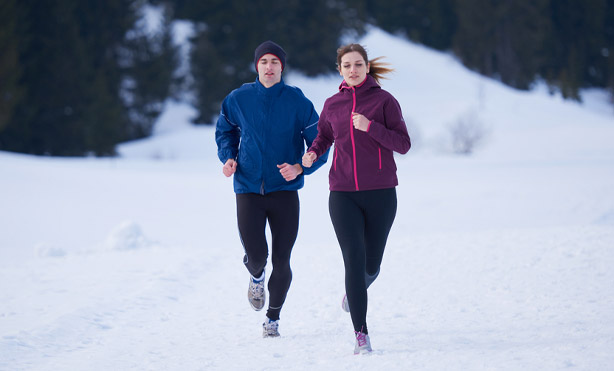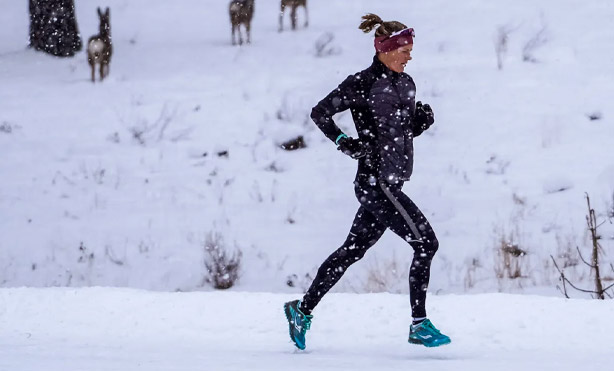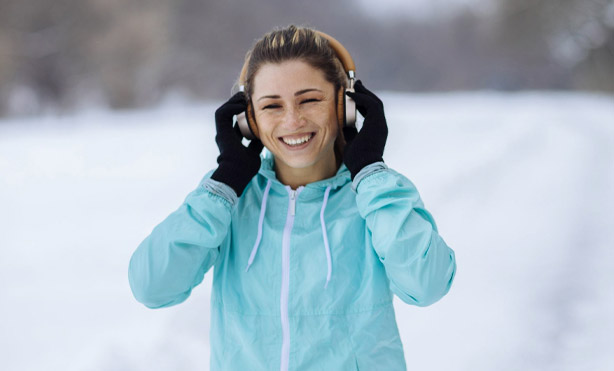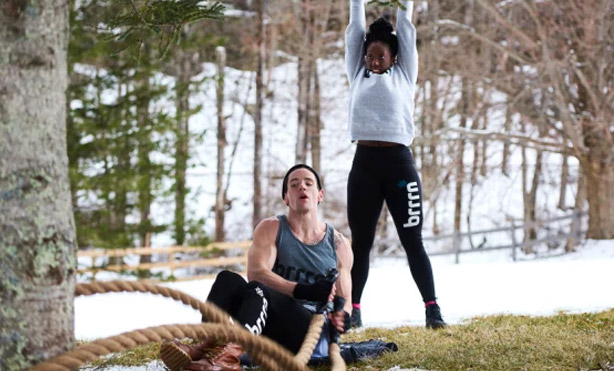Workout Gear Must-Haves to Stay Active in Cold Weather

Studies have shown that exercising in cold weather has many physical and mental benefits, such as lowering your risk of depression and boosting your immune system, among others. And when stepping outside to brave to cold, remember to choose an activity that you truly enjoy, to make that first wave of uncomfortable chill more bearable. However, whatever activity you decide to take up, there are a few things to consider.
Contents
Get Quality Winter Workout Clothes
Dressing properly in thermal clothing can play a great role in how comfortable you are exercising outside. As a base, choose sweat-wicking fabrics such as a merino base layer (avoid cotton because it absorbs moisture and will therefore keep you cold). Merino can absorb up to 30% of its weight in moisture and still keep you warm, dry and cosy. Merino wool base layers are also naturally moisture-wicking – they can draw perspiration away from the skin, keeping you dry when working up a sweat.
Then, you’ll need an insulating layer, such as a performance vest that allows you to move your arms freely. Depending on your activity level (a high-intensity run, for example, elevates your body temperature more than a leisurely hike), this may be sufficient, or you can add an outer shell that protects you from snow and rain.

Keep Your Head, Hands, and Toes Covered
The bulk of your body heat is in your core, where blood flow is focused, leaving your extremities susceptible to cold. That’s why you not only need a merino base layer to keep your torso warm and protected, but you’re also going to need some additional gear for your head and extremities.
Neck Warmer
Pulling a neck warmer up over your nose protects you while also warming up the air you exhale and breathe in, functioning as a natural humidifier.
Warm Gloves
A pair of winter-friendly gloves that’ll keep your hands warm during hikes, cycling rides, and runs.
Winter Leggings
Get a pair of high-rise leggings featuring a ventilated design and moisture-wicking fabric to keep you warm while slaying your cardio session.
Jogging Beanie
A jogging beanie helps keep your head warm without overheating. Moisture-wicking running beanies help draw sweat away from your head.
Running Shoes
Remember to look for a pair of slip-proof shoes as they are an important part of your hiking or exercising equipment for the great outdoors.

Pace Yourself and Adapt to the Weather Conditions
Just as with any indoor workout, make sure to warm up correctly. Cold weather causes muscles to contract, making them stiffer and less flexible. That’s why a dynamic warm-up, complete with gentle but active stretching movements, is essential. To start, simply getting outside and moving can be a good workout. Set reasonable goals but also challenges to keep you working on yourself to stay motivated.
Experts recommend focusing on strength and aerobic endurance rather than speed in the winter. This entails maintaining proper form while cycling in a higher gear at a lower cadence on the bike. When cross-country skiing, try not to expend all of your energy too quickly. Most individuals start too fast. It’s preferable to take it easy at first so you can warm up and get into your thermal base layers as you go. It takes five to six sessions of working out in colder-than-usual conditions to feel your body adapt, so be patient with yourself.
Understand Your Limitations
On days when it is simply too chilly to go outside, try to find a gym or indoor location that can accommodate your needs to stay in shape without jeopardizing your health. You can also devote days to yoga and pilates at home to improve flexibility or strength-training regimens, typically including moves designed expressly for runners and swimmers.

Go for Shorter but More Frequent Workout Sessions
Whatever activity you like to indulge yourself in, shorter sessions can also build your cold tolerance. But then again, you can slowly increase the frequency so that you may adjust to these conditions and not stagnate on the results. As always, reduce the intensity of your workout for the last 10 to 15 minutes to lower your heart rate. But because your body will cool down relatively quickly outside, it’s critical to remove sweaty thermal garments as soon as possible. Because your hands can get dirty, layout your change of clothes ahead of time, in the order you’ll put them on.
Enjoy Your Accomplishments
Get into the athlete mindset to stay dedicated during the long, gloomy days. In those uncomfortable situations, a lot of personal growth occurs, and it’s beneficial to have some alone time to review things and follow your progress. And, as you are aware, the post-workout high is well worth it. Winter is a season that is vastly neglected and unappreciated. It all boils down to being prepared with the proper gear to make your chosen activity fun and effective.






